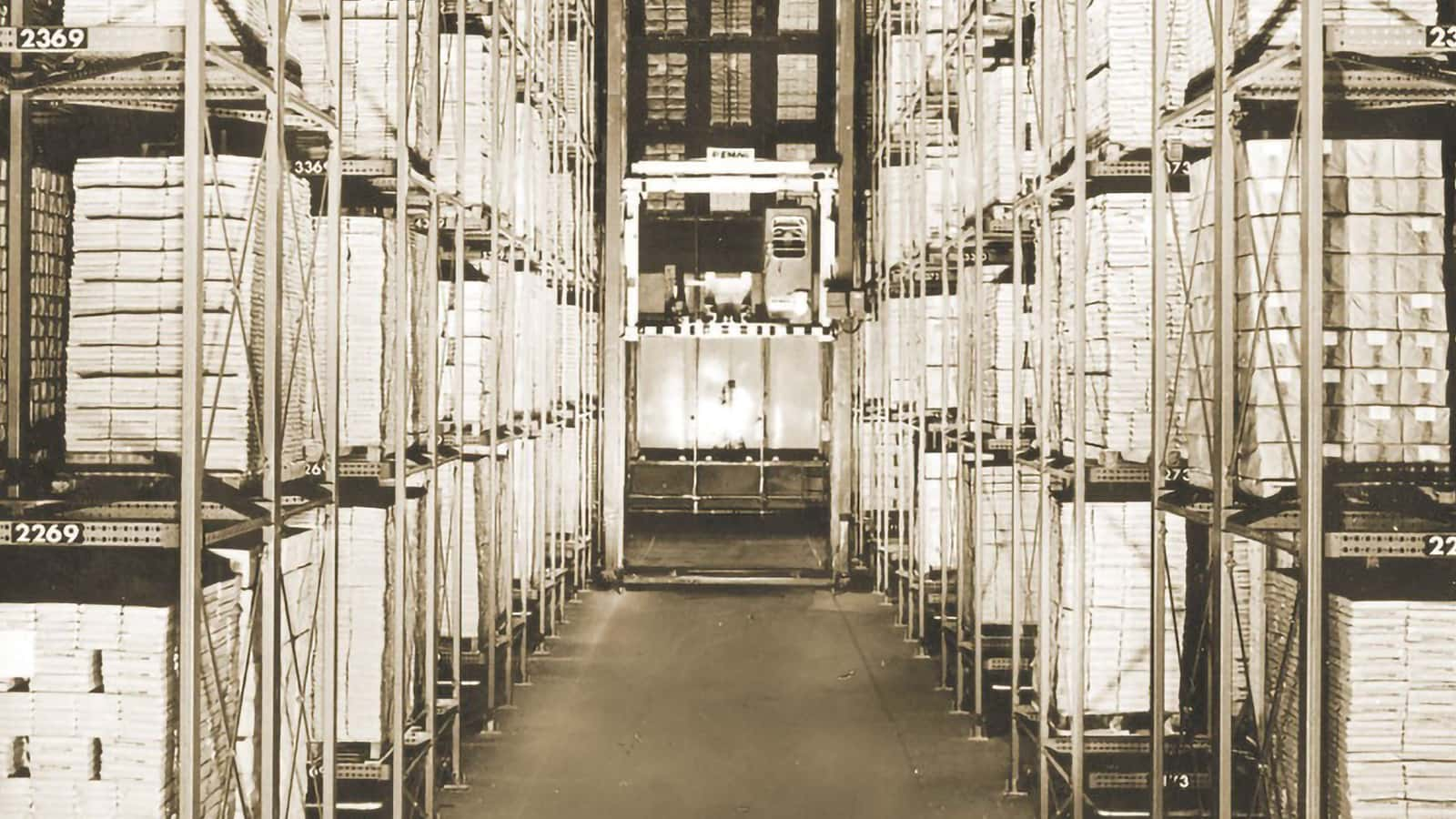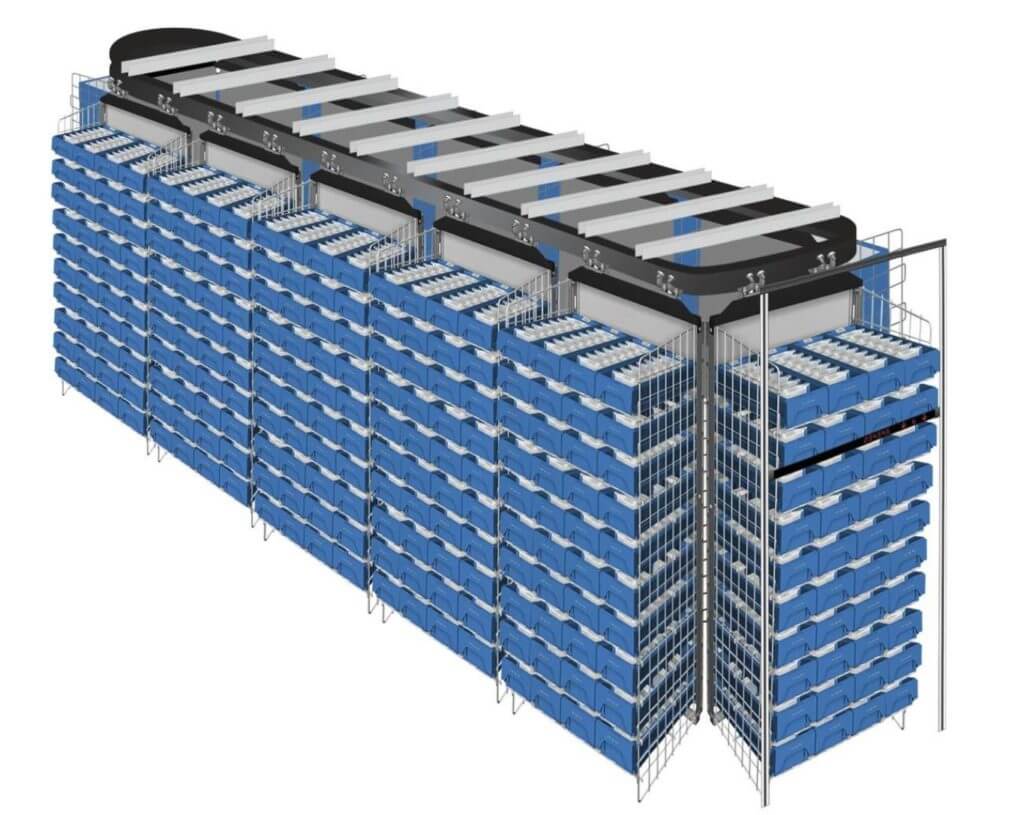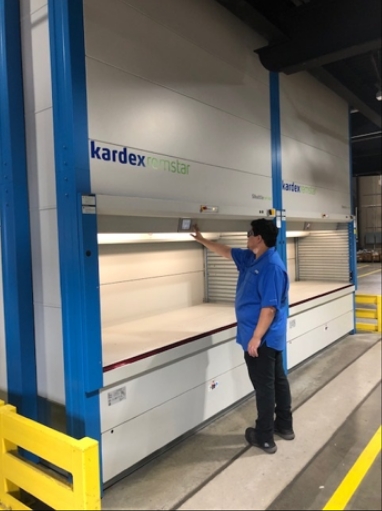Automated retrieval systems have completely transformed warehouse operations—from early carousels to today’s high-speed robotic solutions. At Vertical Storage USA, we’ve helped businesses adopt these systems to reclaim space, boost accuracy, and reduce labor costs.
From early vertical carousels to today’s advanced robotic solutions, the evolution has been nothing short of impressive. This blog post explores the journey of automated retrieval systems and their impact on modern warehousing.
The Evolution of Early Automated Retrieval Systems
First Generation AS/RS: Pioneering Warehouse Automation

The 1960s marked a significant milestone in warehouse automation with the introduction of the first generation of automated storage and retrieval systems (AS/RS). These systems primarily handled heavy pallet loads, utilizing stacker cranes that moved along fixed aisles to store and retrieve items. The first AS/RS was developed by Demag in the 1950s, and by 1962, they installed the first fully automated warehouse for Bertelsmann. This innovation laid the foundation for future advancements in automated warehouse technologies.
Vertical Carousel Systems: Maximizing Vertical Space

The 1970s saw the rise of vertical carousel systems, which brought a new dimension to automated storage. These rotating shelves, reminiscent of a Ferris wheel, allowed for efficient use of vertical space. Vertical carousels are enclosed, automated high density storage units with bi-directional vertically rotating carriers. Totes or shelves are used to store items within these systems.
Horizontal Carousels: Expanding Efficiency Horizontally

Following the success of vertical carousels, horizontal carousel systems gained popularity in the 1980s. These systems consisted of bins rotating on an oval track, providing quick access to stored items. Horizontal carousels present material to the operator at the correct height that minimizes walking, stretching and bending, improving ergonomics and efficiency in warehouse operations.
Overcoming Early Challenges
Despite their advantages, early automated retrieval systems faced several limitations:
- Lack of Flexibility: Once installed, these systems proved difficult to modify or expand.
- High Initial Investment: The significant upfront costs made them accessible primarily to large corporations.
- Maintenance Issues: Complex mechanical components often led to downtime, impacting overall efficiency.
- Limited Software Capabilities: The rudimentary software controlling these systems restricted their ability to integrate with other warehouse processes.
Paving the Way for Modern Solutions
The challenges faced by early automated retrieval systems drove continuous innovation in the field. Companies like Vertical Storage USA recognized the need for more flexible, efficient, and cost-effective solutions. This understanding led to the development of advanced technologies that address the limitations of early systems while building upon their strengths.
As we move forward, we’ll explore how these early innovations set the stage for the modern automated retrieval technologies that have transformed warehouse operations across industries.
How Modern Automated Retrieval Systems Are Transforming Warehouses
Automated retrieval systems have reshaped the landscape of warehouse automation in recent years. Advanced technologies have reshaped the industry, significantly improving efficiency and productivity. Let’s explore the key innovations that are revolutionizing warehouse operations.
Vertical Lift Modules: Space Maximization
Vertical Lift Modules have become a game-changer in warehouse storage. These systems utilize the full height of a facility (often reaching up to 30 feet tall). VLMs can reduce floor space requirements by up to 85% compared to traditional shelving.
VLMs operate on a “goods-to-person” principle, delivering items directly to operators at an ergonomic height. This significantly reduces picking times and improves worker safety. One e-commerce fulfillment center reported a 65% increase in picking speed after VLM implementation.
Goods-to-Person Robots: Order Fulfillment Revolution
Goods-to-Person (G2P) robots have taken warehouse automation to new heights. These automated systems perform tasks such as picking, packing, sorting, and transporting goods in warehouses. G2P systems can increase picking rates from an average of 100 lines per hour with traditional methods to over 300 lines per hour.
A major online retailer implemented G2P robots in their fulfillment centers and saw a 50% reduction in order processing time. These systems prove particularly effective during peak seasons, allowing warehouses to scale operations without significant increases in labor costs.
Advanced Robotic Sortation: Speed and Accuracy
Modern sortation systems (powered by robotics and AI) transform the speed and accuracy of order fulfillment. Artificial intelligence has a profound impact on warehouse automation, providing in-depth examination of various AI-driven systems.
A large logistics company implemented an advanced robotic sortation system and reported a 99.9% accuracy rate in order fulfillment, while reducing labor costs by 30%. These systems provide particular value for e-commerce operations dealing with high volumes of small, diverse items.
Integration with Warehouse Management Software
The true power of modern automated retrieval technologies lies in their seamless integration with Warehouse Management Software. This integration provides real-time inventory visibility, optimizes picking routes, and enables predictive maintenance.
A food distribution company integrated their automated systems with advanced WMS and saw a 25% improvement in overall warehouse efficiency. The system’s ability to analyze data and make real-time adjustments to workflows proved essential during unexpected demand spikes.
The Future of Automated Retrieval
As these technologies continue to evolve, they offer exciting possibilities for further optimizing warehouse operations. The future of automated retrieval systems promises even greater levels of intelligence, flexibility, and efficiency. Companies like Vertical Storage USA lead the way in providing comprehensive solutions that include VLMs, G2P robots, and advanced sortation systems designed to work in harmony with cutting-edge WMS.
The impact of these modern automated retrieval technologies extends beyond mere efficiency gains. In the next section, we’ll explore how these innovations affect overall warehouse productivity and reshape the landscape of logistics and supply chain management.
How Automated Systems Transform Warehouse Performance
Space Utilization Maximization
Automated Storage and Retrieval Systems (ASRS) revolutionize space utilization in warehouses. Vertical Lift Modules and high-density storage solutions reduce floor space requirements by up to 85% compared to traditional shelving methods. This allows businesses to store more inventory in the same footprint or reduce their overall warehouse size. A manufacturing plant in Ohio reported a 66% reduction in floor space usage while increasing storage capacity by 30% after VLM implementation.
Picking Speed and Accuracy Enhancement
Automated retrieval systems significantly increase picking speed and accuracy. Goods-to-Person (G2P) robots increase picking rates compared to traditional methods. This improvement in productivity transforms warehouses dealing with high-volume orders.
Advanced robotic sortation systems achieve high accuracy rates in order fulfillment. This precision reduces errors, minimizes returns, and enhances customer satisfaction. A large logistics company reported impressive accuracy figures while reducing labor costs after implementing an advanced robotic sortation system.
Worker Safety Improvement and Labor Cost Reduction
Automated systems boost efficiency and improve workplace safety. These systems eliminate the need for workers to climb ladders or operate forklifts in high-rack areas, which significantly reduces accident risks. VLMs deliver items to operators at an ergonomic height, which minimizes strain and potential injuries.
Labor cost reduction is another substantial benefit. An e-commerce fulfillment center reported an increase in picking speed after VLM implementation, which allowed them to handle more orders with the same number of staff. This efficiency gain proves particularly valuable during peak seasons when operations need to scale without significant labor cost increases.
Inventory Management Revolution
The integration of automated retrieval systems with advanced Warehouse Management Software transforms inventory management. Real-time inventory visibility, coupled with AI-driven predictive analytics, allows warehouses to optimize stock levels, reduce carrying costs, and minimize stockouts.
A food distribution company that integrated their automated systems with advanced WMS saw an improvement in overall warehouse efficiency. The system’s ability to analyze data and make real-time adjustments to workflows proved essential during unexpected demand spikes, which ensured optimal inventory levels and timely order fulfillment.
High-Speed Sorting and Order Fulfillment
Vertical Storage USA offers comprehensive solutions that include VLMs, horizontal carousels, G2P robots, and advanced robotic sortation systems. These technologies work seamlessly with cutting-edge WMS to enable high-speed sorting and accurate order fulfillment. Their systems can process a large number of items per hour, which significantly boosts warehouse productivity.
Final Thoughts
Automated retrieval systems have transformed warehouse operations from manual processes to highly efficient, automated environments. These systems maximize space utilization, increase picking speed and accuracy, reduce labor costs, and enhance worker safety. The integration with advanced Warehouse Management Software revolutionizes inventory control, enabling real-time visibility and data-driven decision-making.
The future of automated retrieval systems holds great potential for further advancements in AI and machine learning. We anticipate more intelligent and adaptive systems, along with smaller, flexible robots capable of working alongside humans. The trend towards sustainable technologies in automated warehouses will likely continue, aligning with global efforts towards environmental responsibility.
At Vertical Storage USA, we specialize in automated retrieval systems—from VLMs and carousels to robotics and WMS integration. Our solutions are designed to optimize warehouse performance, reduce costs, and help your team work smarter. Our comprehensive range of technologies includes Vertical Lift Modules, horizontal carousels, and advanced robotic sortation systems (designed to optimize warehouse operations). As the industry evolves, we remain committed to providing state-of-the-art solutions that help businesses stay competitive in an increasingly automated world.



